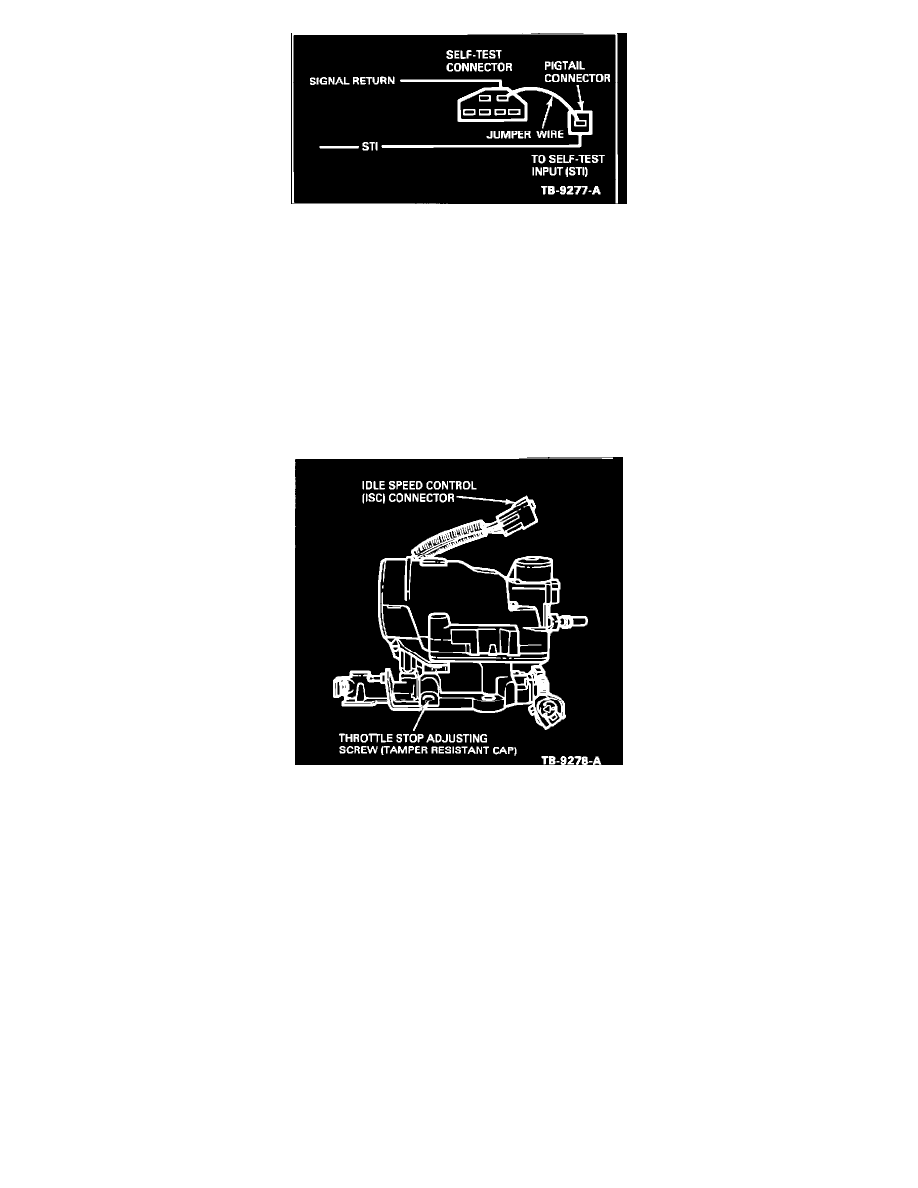Tempo L4-140 2.3L HSC (1986)

Figure 6
^
Connect a jumper wire between the SelfTest input connector and the signal return pin on the Self-Test connector, Figure 6.
^
Turn the ignition key to the "Run" position. DO NOT START ENGINE.
^
The ISC plunger will retract. Wait until plunger is fully retracted (about 5 to 15 seconds).
NOTE:
If plunger does not retract, refer to EEC IV diagnostics.
^
Return the ignition key to the "Off" position; wait 10 to 15 seconds.
^
Remove the jumper wire.
Figure 7
^
Disconnect the ISC motor from the wire harness, Figure 7.
Perform Throttle Hard Stop Adjustment:
^
Remove throttle body from vehicle.
^
Remove the Welch plug which covers the throttle stop adjusting screw, Figure 7.
^
Remove and replace screw if loose.
^
Reinstall throttle body on vehicle, check electrical connectors, start engine, let engine stabilize, and set the idle RPM, ^ Reconnect the ISC
motor to wire harness, Figure 7.
4.
With engine idling, observe ISC extending to curb idle position. Check the area between the throttle lever and tip of the ISC motor. If no
contact is apparent between these two surfaces, binding may exist at the throttle body. With engine Off, open throttle to Wide Open Throttle
(WOT). Upon release, throttle should return to the closed position. If contact is apparent between the ITS and the throttle lever, it is possible
that binding at the throttle body may be just enough to keep the ITS from operating. Determine source of binding (bent shaft, shaft seal
swelling, or cruise control) and replace or repair as necessary.
